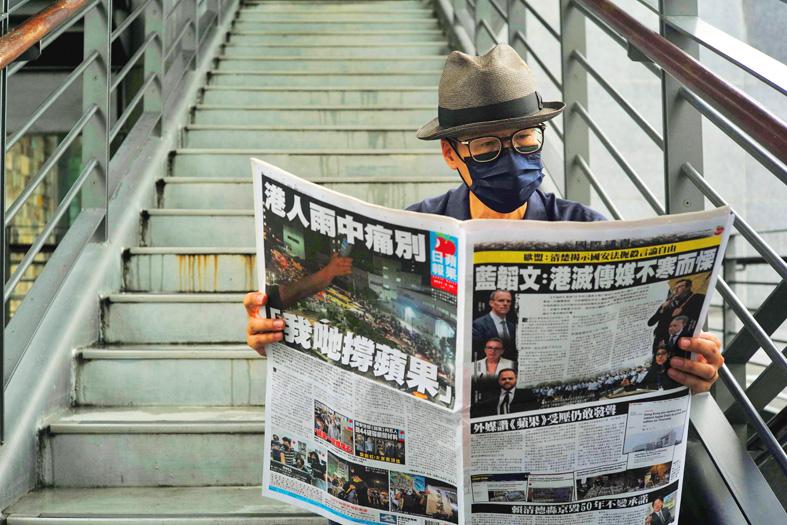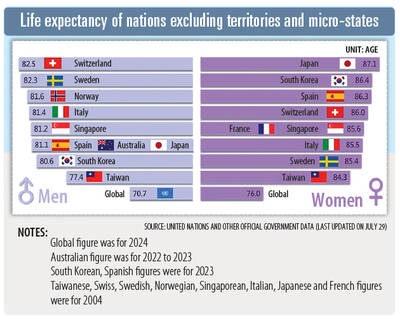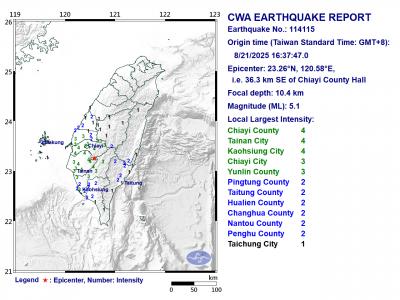As he queued to board a flight out of Hong Kong to Taiwan last month, dissident artist Kacey Wong (黃國才) was painfully aware of the additional immigration officials who had been present to scrutinize each departing passenger.
Wong, 51, was one of Hong Kong’s best-known provocateurs, an artist who specializes in satirizing and criticizing those in power.
As China’s crackdown on dissent gathered pace in Hong Kong, he decided he had to leave.

Photo: AFP
Would the authorities let him go? Multiple dissidents have been arrested at the airport and Wong wondered if he, too, was on a watchlist, especially when extra immigration officials arrived as his flight was called.
“About 20 steps away from the gate, they spread out as if they were playing American football, and just watched everyone who was boarding for a last-minute tackle,” he said.
“I was able to come to Taiwan, so that’s good, but emotionally it’s very scary,” Wong said. “These were very, very intense moments.”
Wong announced his relocation last week with a black-and-white Facebook video in which he strolled along Hong Kong’s famous harbor singing a rendition of Vera Lynn’s wistful ode We’ll Meet Again.
It struck a chord in a place where tens of thousands of families have fled overseas.
“I left because I am seeking 100 percent freedom of artistic expression and that’s why I came to Taiwan,” he said, speaking from Taichung.
He used his time in quarantine for arrivals to Taiwan to edit his farewell video.
“I think the most important thing is when I come here, I can continue to advocate my beliefs and practice my art, but I doubt I can do that in Hong Kong any more,” he said.
Hong Kong was once regarded as a bastion of free speech within authoritarian China — a place where artists, writers and residents could speak their minds without fear of prosecution.
However, over the past year, China has begun remolding Hong Kong in its own authoritarian image in response to huge and often violent democracy protests in 2019.
A sweeping new security law, imposed on Hong Kong last summer, has criminalized much dissent.
Prosecutors dusted off an old colonial-era sedition law to target political opinions, and an official campaign was launched to purge the territory of anyone deemed unpatriotic.
Cornell-educated Wong knew he probably did not fit the profile of a “patriotic” Chinese artist.
In a famous 2018 performance-art piece called The Patriot, he performed China’s national anthem on an accordion while inside a red metal cage.
Such a performance would be illegal under new laws passed in Hong Kong last year that ban “insults” to China’s flag and anthem.
Wong said he was initially determined to stay and test the new boundaries.
However, the mass arrests of more than 50 prominent opposition figures earlier this year under the National Security Law set off a “big alarm.”
“My emotion says I will never leave Hong Kong, but at the same time I am looking at the data of the battlefield... It’s time to go,” Wong said. “I will not return to Hong Kong any more. That’s why when people ask me ‘Why you are here?’ I say I am in self-exile.”
Among the memorabilia Wong packed was the final issue of Hong Kong’s Apple Daily newspaper and the accordion he used in The Patriot. Apple Daily collapsed in June after officials arrested its senior executives and froze the company’s assets using the National Security Law.
Wong predicts that critical political art will slowly disappear from Hong Kong, taken over by “more and more decorative items.”
“A lot of these Chinese communist proxies are trying to please Beijing so they will go to the extreme” to pursue anything deemed politically challenging, Wong said. “That’s why people are saying this is like Cultural Revolution. It’s happening. It’s not as severe as in mainland China in the sixties but it’s getting there.”
He advises artists in Hong Kong to “go underground” and “keep the fire burning” by showing their work at home to friends and close contacts.
He vowed to continue to “advocate for the freedom of Hong Kong” and urged others who have gone overseas to do the same.
“I don’t think I left Hong Kong. I think Hong Kong was being forced to leave me because Hong Kong was kidnapped,” he said. “From now on Hong Kong will live inside my heart because the Hong Kong as I know it does not exist any more.”

Eight restaurants in Taiwan yesterday secured a one-star rating from the Michelin Guide Taiwan for the first time, while three one-star restaurants from last year’s edition were promoted to two stars. Forty-three restaurants were awarded one star this year, including 34 in Taipei, five in Taichung and four in Kaohsiung. Hosu (好嶼), Chuan Ya (川雅), Sushi Kajin (鮨嘉仁), aMaze (心宴), La Vie by Thomas Buhner, Yuan Yi (元一) and Frassi in Taipei and Front House (方蒔) in Kaohsiung received a one-star rating for the first time. Hosu is known for innovative Taiwanese dishes, while Chuan Ya serves Sichuan cuisine and aMaze specializes

STATS: Taiwan’s average life expectancy of 80.77 years was lower than that of Japan, Singapore and South Korea, but higher than in China, Malaysia and Indonesia Taiwan’s average life expectancy last year increased to 80.77 years, but was still not back to its pre-COVID-19 pandemic peak of 81.32 years in 2020, the Ministry of the Interior said yesterday. The average life expectancy last year increased the 0.54 years from 2023, the ministry said in a statement. For men and women, the average life expectancy last year was 77.42 years and 84.30 years respectively, up 0.48 years and 0.56 years from the previous year. Taiwan’s average life expectancy peaked at 81.32 years in 2020, as the nation was relatively unaffected by the pandemic that year. The metric

Taiwan High Speed Rail Corp. (THSRC) plans to ease strained capacity during peak hours by introducing new fare rules restricting passengers traveling without reserved seats in 2026, company Chairman Shih Che (史哲) said Wednesday. THSRC needs to tackle its capacity issue because there have been several occasions where passengers holding tickets with reserved seats did not make it onto their train in stations packed with individuals traveling without a reserved seat, Shih told reporters in a joint interview in Taipei. Non-reserved seats allow travelers maximum flexibility, but it has led to issues relating to quality of service and safety concerns, especially during

A magnitude 5.1 earthquake struck Chiayi County at 4:37pm today, the Central Weather Administration (CWA) said. The hypocenter was 36.3km southeast of Chiayi County Hall at a depth of 10.4km, CWA data showed. There were no immediate reports of damage resulting from the quake. The intensity of the quake, which gauges the actual effect of a seismic event, measured 4 in Chiayi County, Tainan and Kaohsiung on Taiwan's seven-tier intensity scale, the data showed. The quake had an intensity of 3 in Chiayi City and Yunlin County, while it was measured as 2 in Pingtung, Taitung, Hualien, Changhua, Nantou and Penghu counties, the data